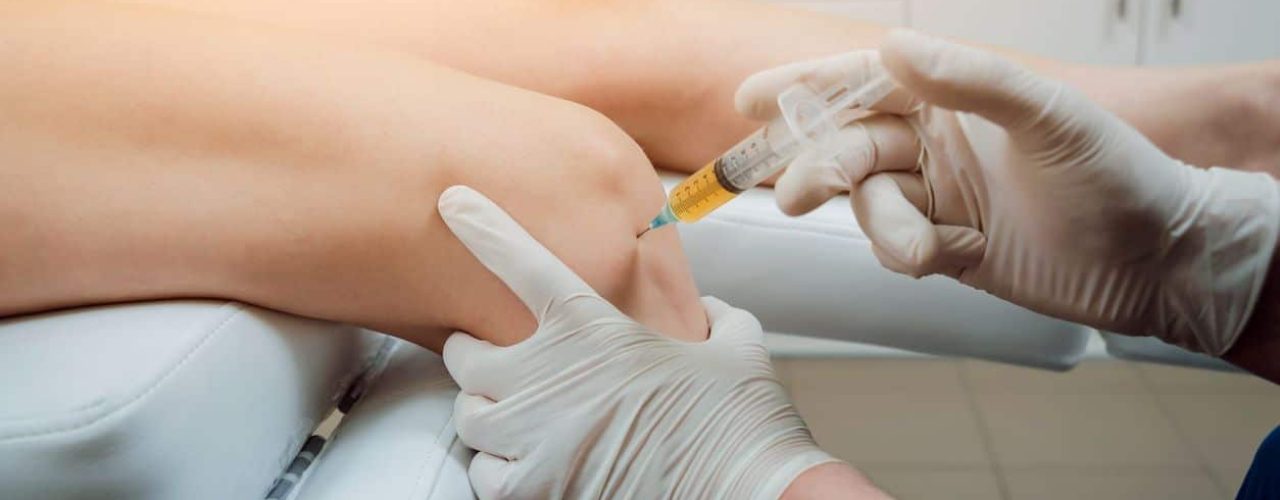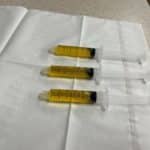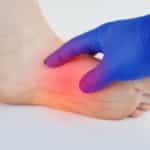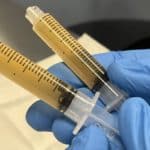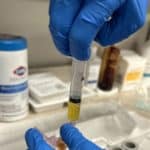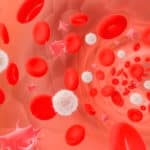Are you tired of living with knee pain that limits your daily activities? Traditional treatments may not always provide the long-lasting relief you desire. But fear not! There is a breakthrough solution that is transforming the way to tackle knee pain: Platelet-rich Plasma (PRP) injection. PRP treatments have been widely used as sports medicine.
In this article, we will explore the power of PRP injection, their effectiveness in the treatment of knee osteoarthritis (OA), and how they can revolutionize your journey to pain-free knees.
Understanding Knee Osteoarthritis
A. Common causes of knee pain
Chronic knee pain can be a real buzzkill, preventing you from enjoying life to the fullest. Knee pain is mostly caused by a degenerative condition that involves problems like meniscal tears, joint instability and knee cartilage degeneration.
In USA, the number of people experiencing knee pain has doubled since the mid-twentieth century, affecting more than 25% of Americans over 18 years old. It’s even considered the sixth leading cause of disability.
Three main factors contribute to the development of knee pain:
Trauma: if you’ve had knee injuries such as chronic tendon injuries in the past, there’s a significant chance (between 21% and 48%) that you’ll experience knee pain later in life.
Obesity: Carrying extra weight can increase your risk of developing knee pain. For every 5 kg you gain, there’s a 36% higher chance of experiencing knee pain.
Age: As we get older, our knees go through changes that can lead to increased pain. Age-related factors like remodeling and bone loss, and changes in how we perceive pain can affect the functionality of the knee and contribute to more knee pain, especially in the elderly.
B. Impact of knee pain on daily life and mobility
Knee pain and physical function may be a broad public well-being concern.
Persistent pain, joint stiffness and limited joint mobility considerably reduces the quality of life, causing limitation to job activity, early retirement and loss of autonomy, financial burden on elderly patients.
Conservative treatments, including exercise and medication, are typically recommended as first-line approaches.
However, these methods often have limited control over the condition, and medications can have side-effects.
What are Platelet-rich Plasma (PRP) Injections?
A. Definition and explanation of platelet-rich plasma (PRP)
Fortunately, advances in medical treatments have provided non-surgical options for knee pain, among which PRP injection has gained attention as a simple, cost-effective, and minimally invasive solution for cartilage repair and knee pain reduction.
B. How platelet-rich plasma (PRP) is derived from the patient’s blood
Platelet-rich plasma is a remarkable treatment derived from patient’s own blood. By isolating and concentrating a type of blood cell – platelets (i.e., between 1.8- to 9.8-times baseline values) containing 1500 growth factors and cytokines, PRP injections provide a potent healing solution.
This natural approach using blood platelets harnesses the body’s own regenerative abilities to promote tissue repair and recovery without inflammation.
Platelet injections with diverse growth factors address underlying causes of knee pain and provide faster recovery times and long-term effects, allowing patients to return to their active lifestyles sooner.
C. Scientific basis for healing properties of platelet-rich plasma (PRP) injection knee treatment
Systematic review and meta analysis have provided compelling evidence supporting the effectiveness of platelet-rich plasma treatment in comparison to other treatment modalities, such as hyaluronic acid injections and cortisone injections, to reduce pain and improve physical functions in individuals with knee OA.
PRP injections vs hyaluronic acid injections
When compared to hyaluronic acid injections, PRP injections have shown superior outcomes in terms of decreasing pain, reduced stiffness, and improved functionality, indicating that PRP injections can allow individuals to better manage their knee pain symptoms.
PRP injections vs cortisone injections
Furthermore, a one-year follow-up on patients who received either platelet-rich plasma or cortisone injections for knee pain in the randomized controlled trials.
The results of clinical trials revealed that individuals treating osteoarthritis using PRP injections experienced better long-term outcomes, including sustained pain reduction, improved joint flexibility, and enhanced functional ability, in comparison to those who received cortisone injections.
D. Different administration modalities of platelet-rich plasma therapy
Revolutionizing the field of regenerative medicine, platelet-rich plasma therapies offer a diverse range of administration modalities that hold tremendous promise to treat knee OA, relieving the persistent pain and improving patient’s quality of life.
Injection approaches
As for the injection technique, different approaches were described in the studies.
The superolateral approach, where patients were positioned supine with a slightly bent knee, was the most commonly (47.8%) used in the studies.
The anteromedial approach, with patients seated and knees flexed at 90 degree, was described in 8.7% of studies. Another study (4.3%) mentioned a suprapatellar approach without specifying the direction.
Injection locations
The location of injection also plays a role in the platelet-rich plasma treatment outcome.
Studies comparing intra-osseous plus intra-articular PRP injections to intra-articular PRP injections, the combined injections can lead to superior clinical outcomes, including sustained reduction in pain scores, improved functionality and enhanced quality of life.
However, some patients with the combined therapy experience more adverse effects.
Professional therapy plan is required for PRP therapy
Further research is needed to establish standardized protocols for platelet-rich plasma administration and to explore the optimal frequency and timing of injections.
Ultrasound guidance can also improve the accuracy of PRP treatment.
By refining these modalities, healthcare professionals can maximize the potential of PRP injections and improve outcomes for individuals suffering from knee osteoarthritis.
Conclusion
PRP treatment is superior to traditional osteoarthritis treatment
Knee pain is a prevalent and burdensome condition that significantly impacts the quality of life. Traditional osteoarthritis treatment often falls short in providing satisfactory long-term relief.
However, platelet-rich plasma injections have emerged as a groundbreaking solution for knee pain.
With their ability to promote tissue generation, PRP therapy as a safe and effective treatment offers hope for millions of individuals suffering from knee pain.
Ask Knoxville Regenerative Clinic for your personalized PRP therapeutic strategies
While platelet-rich plasma injections offer promising results using patient’s own blood, it’s important to note that the effectiveness of these injections may vary among individuals.
It is advisable to consult with a healthcare professional in Knoxville Regenerative Clinic who specializes in knee pain management to determine the best platelet rich plasma treatment option based on your specific condition.
Go for PRP treatment and leave away knee osteoarthritis
Say goodbye to persistent knee pain and embrace a future of improved mobility and a higher quality of life with platelet-rich plasma injections using your own blood.
Don’t let knee pain hold you back – consult a healthcare professional in Knoxville Regenerative Clinic today to explore the benefits of platelet-rich plasma injections to reduce pain of knee joint.
References:
https://pubmed.ncbi.nlm.nih.gov/36800668/
Idres FA, Samaan M. Intra-articular platelet-rich plasma vs. corticosteroid injections efficacy in knee osteoarthritis treatment: a systematic review. Ann Med Surg (Lond). 2023 Feb 6;85(2):102-110. doi: 10.1097/MS9.0000000000000106. PMID: 36845770; PMCID: PMC9949821.

